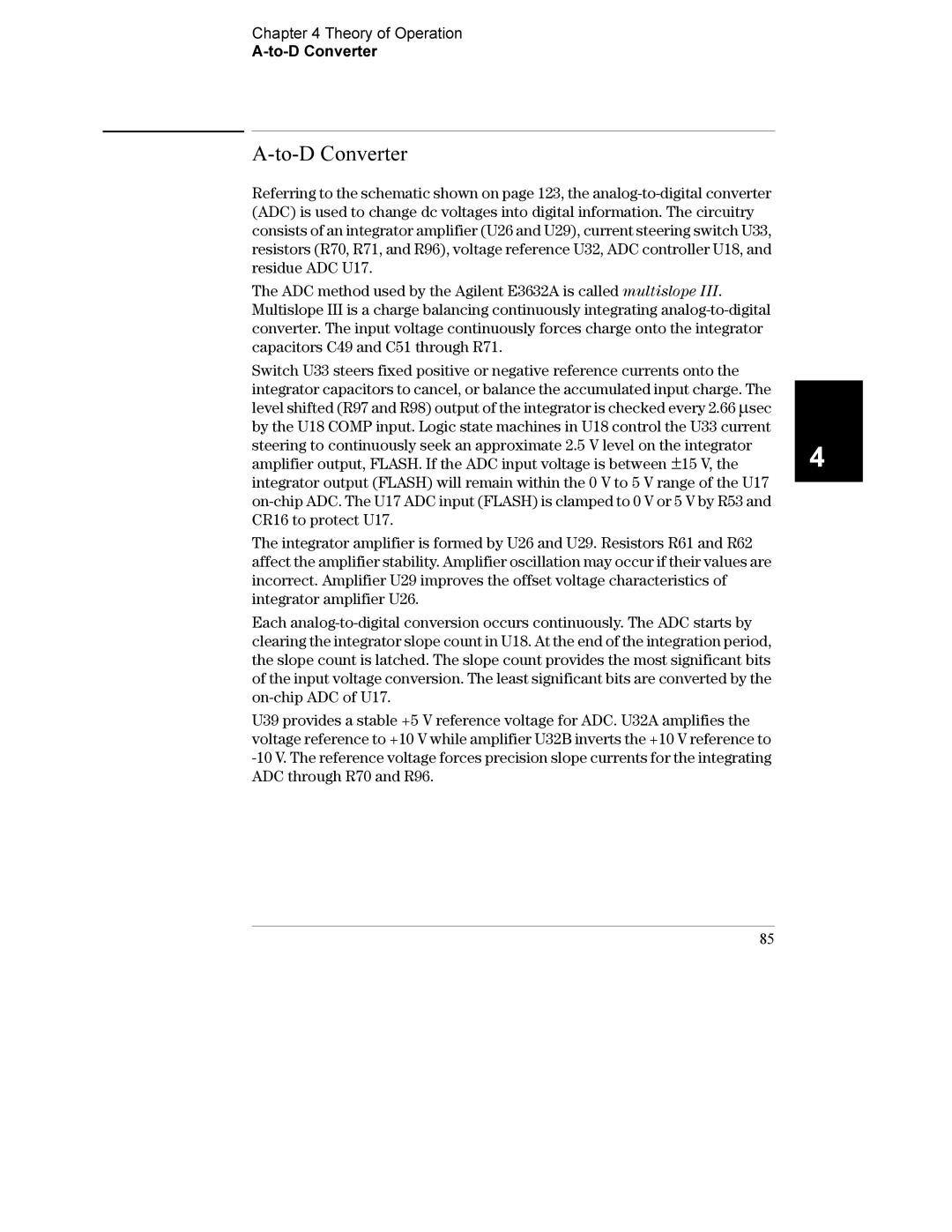
Chapter 4 Theory of Operation
A-to-D Converter
A-to-D Converter
Referring to the schematic shown on page 123, the
The ADC method used by the Agilent E3632A is called multislope III. Multislope III is a charge balancing continuously integrating
Switch U33 steers fixed positive or negative reference currents onto the integrator capacitors to cancel, or balance the accumulated input charge. The level shifted (R97 and R98) output of the integrator is checked every 2.66 msec by the U18 COMP input. Logic state machines in U18 control the U33 current steering to continuously seek an approximate 2.5 V level on the integrator amplifier output, FLASH. If the ADC input voltage is between ±15 V, the integrator output (FLASH) will remain within the 0 V to 5 V range of the U17
The integrator amplifier is formed by U26 and U29. Resistors R61 and R62 affect the amplifier stability. Amplifier oscillation may occur if their values are incorrect. Amplifier U29 improves the offset voltage characteristics of integrator amplifier U26.
Each
U39 provides a stable +5 V reference voltage for ADC. U32A amplifies the voltage reference to +10 V while amplifier U32B inverts the +10 V reference to
4
85
